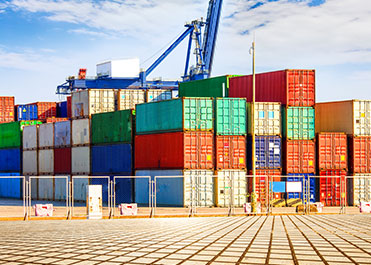Challenges and Opportunities in Global Freight and Export Logistics
The global freight and export logistics industry plays a crucial role in facilitating international trade and ensuring the smooth transportation of goods across borders. As businesses expand their markets worldwide, efficient logistics become a key factor in maintaining competitiveness. However, this industry faces several challenges while also presenting numerous opportunities for growth and innovation.
Challenges in Global Freight and Export Logistics
1. Supply Chain Disruptions
One of the biggest challenges in global logistics is supply chain disruptions. Events such as pandemics, natural disasters, and geopolitical tensions can significantly impact the flow of goods. These disruptions lead to increased costs, delivery delays, and stock shortages.
2. Rising Transportation Costs
Fuel prices, labor costs, and regulatory changes have contributed to the rising costs of transportation. Freight rates fluctuate due to global economic conditions, making it difficult for exporters to predict and manage shipping expenses.
3. Compliance and Regulations
Each country has its own trade regulations, customs procedures, and documentation requirements. Navigating these regulations can be complex and time-consuming, leading to potential delays and penalties if not handled properly.
4. Environmental Concerns
Sustainability is becoming a major concern in the logistics sector. Governments and consumers are demanding eco-friendly transportation solutions, which require investment in alternative fuels, energy-efficient vehicles, and carbon footprint reduction strategies.
Opportunities in Global Freight and Export Logistics
1. Technological Advancements
The integration of technology such as Artificial Intelligence (AI), Blockchain, and the Internet of Things (IoT) is transforming logistics operations. These technologies improve tracking, automate documentation, and enhance supply chain visibility, leading to greater efficiency and cost savings.
2. Expansion of E-Commerce
The rapid growth of e-commerce has increased demand for international shipping and last-mile delivery solutions. Companies that adapt to this trend by optimizing logistics networks and investing in efficient warehousing can capitalize on this expanding market.
3. Trade Agreements and Market Expansion
Free trade agreements (FTAs) and regional trade blocs create new opportunities for exporters by reducing tariffs and simplifying trade procedures. Businesses that strategically enter emerging markets can benefit from these agreements and expand their global reach.
4. Green Logistics Initiatives
The push for sustainability in logistics presents an opportunity for companies to invest in eco-friendly transportation solutions. Businesses that adopt green logistics practices can not only reduce costs in the long run but also gain a competitive advantage by aligning with consumer and regulatory expectations.
Conclusion
The global freight and export logistics industry faces significant challenges, from supply chain disruptions to regulatory complexities and environmental concerns. However, technological advancements, the rise of e-commerce, trade agreements, and sustainability initiatives present promising opportunities for growth. By embracing innovation and adapting to market changes, logistics companies and exporters can navigate these challenges and thrive in the evolving global trade landscape.







Leave a Reply
Want to join the discussion?Feel free to contribute!